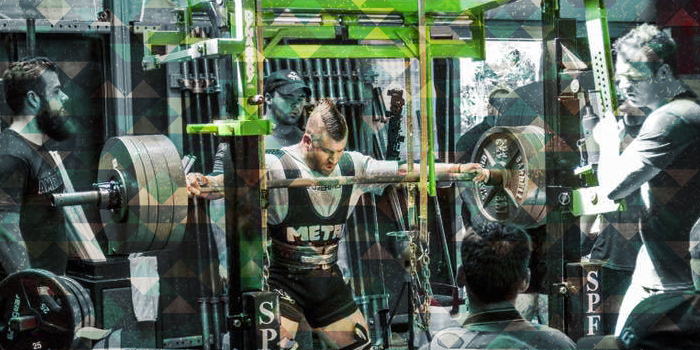
I recently read an article about how coaches and personal trainers are failing the fitness industry. We are too busy splitting hairs over theories, agendas, and ideas with other professionals in the same field. We need to get back to the basics and ask ourselves why we entered this career field in the first place. One of the primary reasons you entered this field (hopefully) is that you wanted to help others become better. The first step in making someone better is building a solid base (we have all heard this before) so let’s take it back to the basics and actually sweat the small stuff!
First, a refresher on some basic strength building. If you want to become stronger you gradually stress your body (external load) then allow for super compensation, allowing more stress (external load) to be moved in the future. Next, we develop larger and more dense muscle which will have a greater contraction allowing more force production. Let's pause here for a second: if a muscle becomes stronger and moves more weight, what happens when multiple muscles become stronger and work together to do the same movement? You guessed it, your body moves more efficiently, you become stronger, and you become able to move heavier weight.
RELATED: The Quick Fix: Simple Ways to Conquer Common Powerlifting Mistakes
With that being said, lets now look at the smaller details when it comes to squatting. We have lower body flexion, extension, external rotation, and upper body contraction. We are doing these things to transfer force from the ground to the bar.
"Wait, did you say external rotation?”
Following our very basic strength principles, we want to recruit and activate as much muscle as possible to move an external load, as well as stabilize it. The mechanics of external rotation have been lost when coaching the squat and it is beginning to show with the rising popularity of performing a squat. From bodybuilders to powerlifters to Instagram hall-of-famers, everyone seems to have adopted fascination with performing squats. While I support the new-found appreciation of squatting, it pains me to see that MOST people are lacking external rotation.
The Basics of External Rotation: The What/How/Why/and Whens:
What is external rotation?
External rotation, defined, is the process of turning outward or away from the midline of the body. There are only a few limbs on our body that can do this and two main ones are the arm and the leg due to the ball and socket joint of the shoulder and hip.
How do I externally rotate?
This movement will take place at the ball and socket joint of the hip for application of teaching the squat. Several muscles are required to be activated for this to happen with a lot of people being left in the dark since they do not understand how to activate particular muscles by themselves (proprioception). The analogy we use at NBS Fitness is to have your feet planted solid on the ground and pretend your leg is a screw driver by twisting your feet outwardly into the ground without allowing your feet to slide. When this happens, you should see your knees and the rest of the leg “twist out.”
Why twist out?
We have many bony landmarks on our femurs. If we do not externally rotate, we are unable to move these bony landmarks out of the way of contracted muscles. Furthermore, we are jamming our femur into our hip joint which decreases our range of motion. More muscle recruitment allows for more stability and a larger load to be moved. If we do not externally rotate, we fail to activate the whole lateral side of muscles (outside, away from the middle of our body) which then decreases the amount of muscle recruited for the movement and decrease the stability we have while under load. Since this load is present the second we stand up on a squat, you better get your ass turned on (literally) and externally rotate even before you lift it out of the rack. This rotation should be done the ENTIRE movement of the squat when descending and ascending.
One final thing I’d like to touch on is the commonly misinterpreted cue of, “knees out.” You hear this cue being yelled out all the time, sometimes during squats that actually look pretty damn good. Then you have people yelling nothing when someone is squatting and their knees collapsed in so far the could touch each other. The "knees out" cue is another way to say externally rotate. When you “screw drive” your feet into the ground, take notice at what happens to your knee — it should twist out. That is the golden ticket right there, which has evolved (or devolved) into a cue of knees out. Many people hear this and just bend their knees outward over their feet cause them to roll the foot. This is not external rotation and in turn makes a lifter squat much more inefficiently.
So, let's go against the grain of the failing fitness industry and focus on the people who need help: We can start by taking them back to the basics and sweating the small stuff that gets lost in translation — like external rotation.










If you have any other questions concerning this feel free to email me directly at christian@nbsfitness.net
Twist your knees out in daily life and say goodbye to your knees.